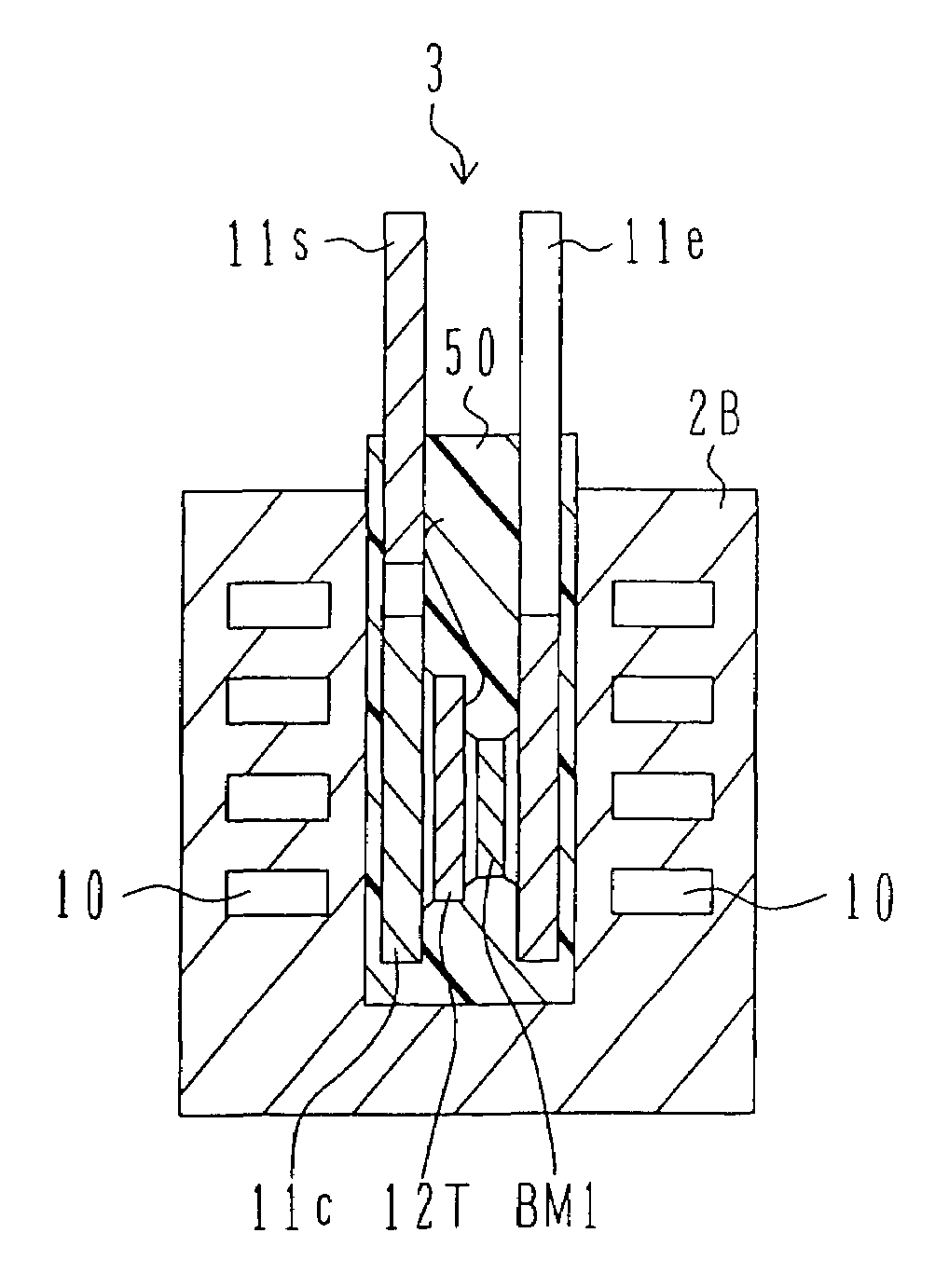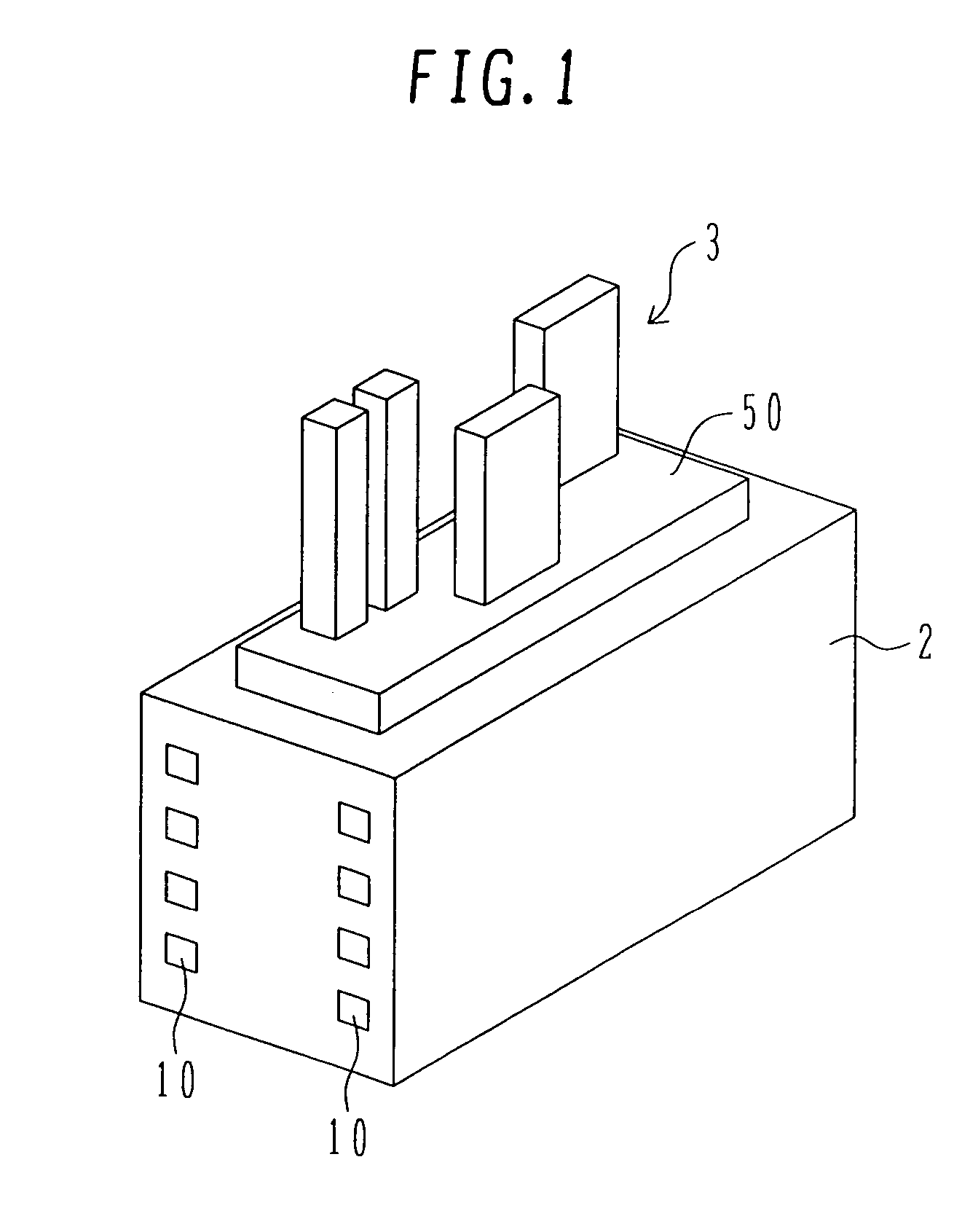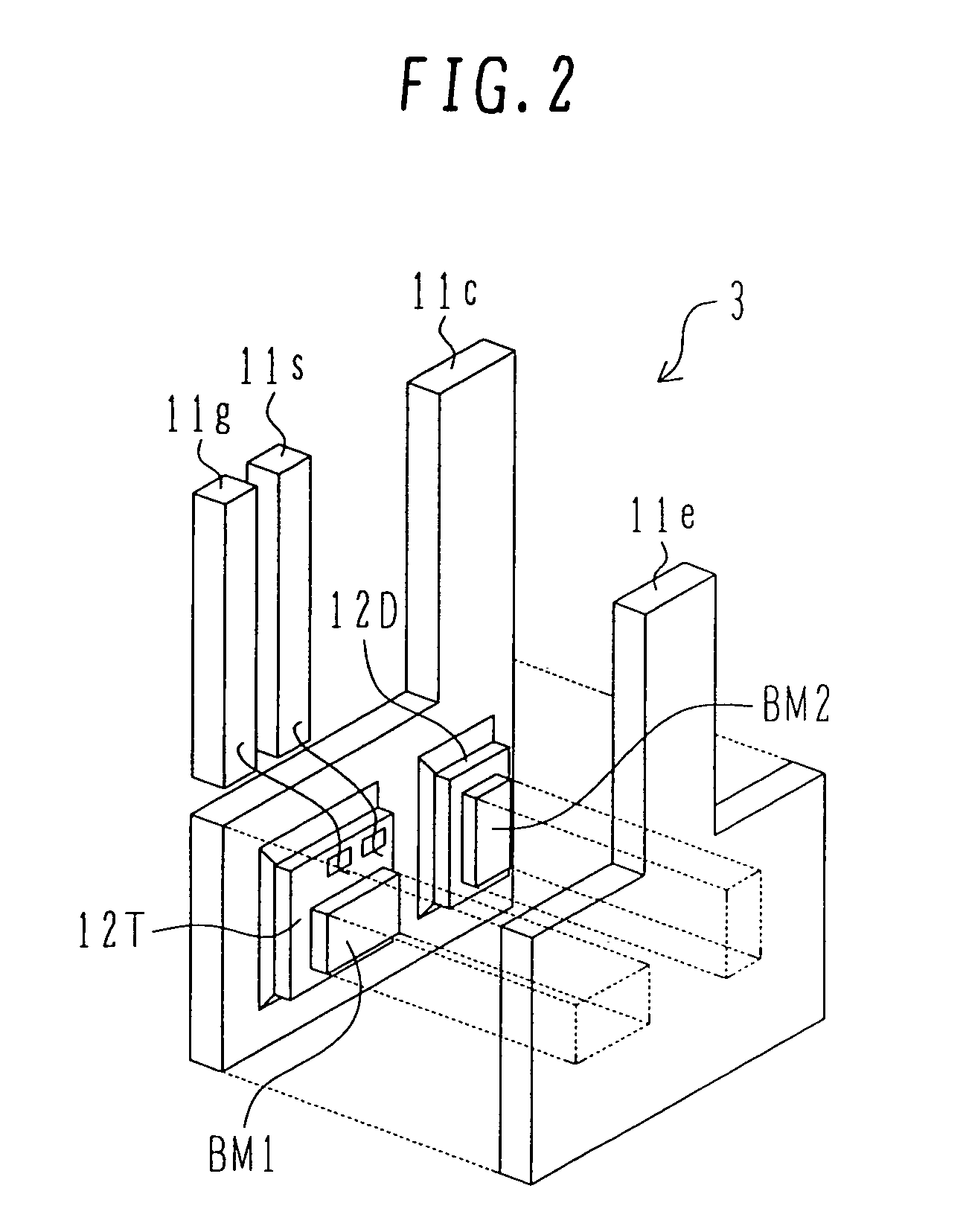Semiconductor unit, and power conversion system and on-vehicle electrical system using the same
a technology of semiconductor devices and power conversion systems, which is applied in the direction of semiconductor devices, heat exchange apparatus, and semiconductor/solid-state device details, etc., can solve the problems of not revealing the thermal connection and electrical insulation between the semiconductor devices and the radiator mechanism, and the thickness of the solder or brazing material used in mounting the second and third radiators to the upper surface of the semiconductor devices is not uniform, so as to improve the electrical insulation and reduce the thermal resistance. , the effect of high reliability
- Summary
- Abstract
- Description
- Claims
- Application Information
AI Technical Summary
Benefits of technology
Problems solved by technology
Method used
Image
Examples
first embodiment
[0059]FIGS. 1 to 13 show the structures of a semiconductor unit according to the invention, an on-vehicle inverter using the semiconductor unit, and a hybrid electric vehicle using the on-vehicle inverter.
[0060]Referring to FIGS. 1 to 5, the structure of the semiconductor unit of this embodiment will be described.
[0061]FIG. 1 is a perspective view of the semiconductor unit according to the first embodiment of the invention; FIG. 2 is a perspective view of a semiconductor device used in the semiconductor unit according to the first embodiment; FIG. 3 is an exploded perspective view of the semiconductor unit according to the first embodiment; FIG. 4 is a side sectional view of the semiconductor unit according to the first embodiment; and FIG. 5 is a front view of the semiconductor unit according to the first embodiment. In FIGS. 1 to 5, like elements are given like reference numerals.
[0062]Referring first to FIG. 1, the semiconductor unit of the embodiment is made up of a semiconducto...
second embodiment
[0169]Referring to FIGS. 14 and 15, the structure of a semiconductor unit according to the invention will be described.
[0170]FIG. 14 is a perspective view of the semiconductor unit according to the second embodiment of the invention; and FIG. 15 is a sectional view of the semiconductor unit of the second embodiment. The same numerals as in FIGS. 1 to 5 indicate the same components.
[0171]In this embodiment, as shown in FIG. 14, a power semiconductor device 3A has a plurality of insulative high-thermal-conductivity projections 54 on the surface of the emitter lead 11e (on the surface facing the inside of the radiator base 2). Likewise, the insulative high-thermal-conductivity projections 54 (not shown in FIG. 14) are provided also on the surface of the collector lead 11c (on the surface facing the inside of the radiator base 2).
[0172]The insulative high-thermal-conductivity projections 54 are made of a material of electrical insulation and high thermal conductivity. One example is a m...
third embodiment
[0178]Referring next to FIGS. 16 and 17, a semiconductor unit according to the invention will be described.
[0179]FIG. 16 is a front view of the semiconductor unit according to the third embodiment of the invention; and FIG. 17 is a sectional view of the semiconductor unit of the third embodiment taken along line B-B of FIG. 16. The same numerals as in FIGS. 1 to 5 indicate the same components.
[0180]The embodiment has electrically insulative support jigs 56A and 56B in the radiator base 2 as shown in FIGS. 16 and 17, with which the power semiconductor device 3 is retained, and molded with the high-thermal-conductivity resin 50. The structure of the power semiconductor device 3 is the same as that shown in FIG. 2.
[0181]As shown in FIG. 17, in the state in which the power semiconductor device 3 is insert-molded in the hollow radiator base 2 with the high-thermal-conductivity resin 50, the high-thermal-conductivity resin 50 is present between the collector lead 11c and the sensor lead 1...
PUM
 Login to View More
Login to View More Abstract
Description
Claims
Application Information
 Login to View More
Login to View More - R&D
- Intellectual Property
- Life Sciences
- Materials
- Tech Scout
- Unparalleled Data Quality
- Higher Quality Content
- 60% Fewer Hallucinations
Browse by: Latest US Patents, China's latest patents, Technical Efficacy Thesaurus, Application Domain, Technology Topic, Popular Technical Reports.
© 2025 PatSnap. All rights reserved.Legal|Privacy policy|Modern Slavery Act Transparency Statement|Sitemap|About US| Contact US: help@patsnap.com



